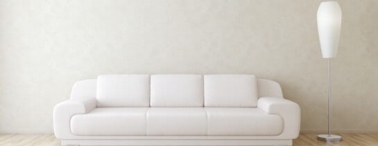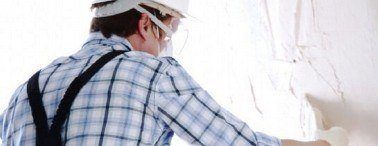
Plastering in Prehistoric Times
Besides the roof there is no more important structure for the protection of the dwelling than the wall of the home. Early men who never had the luxury of a cave draped hides over a framework or stacked rocks to fend off the wind and sleet. The people of the North American plains used buffalo hides to this effect.
In other parts of the world a lime paste was mixed with sand to fill the holes in rock walls. During the long winters people began to decorate the interior of their dwellings with pictures and storyboards that told of brave exploits or tried to capture the spirit of an animal in a drawing. The wall became a artist's canvas as well as a protective barrier. Even plastered walls became drawing boards that were decorated with artwork and mosaic s featuring coloured rocks.
Plastering in Europe and Americas
Plastered walls became popular in Europe after the Great Fire of London in 1666. The King of France ordered that all wood walls be plastered as fire breaks to prevent such an episode happening there. This took mountains of plaster outside Paris and the substance became known as Plaster of Paris. Until the invention of Portland cement Plaster of Paris became a staple in the plastering field and is still used today in ornamental work.
Plastered walls became a standard for interior walls in the 1800's and continued until after the Second World War. Strips of wood called laths would be nailed horizontally across the studs at 1/8" to ¼" intervals that allowed the plaster to be anchored. The first coat is a sandy, plaster mix that would be pressed into the surface and the plaster would extrude through the narrow space between the slats forming handles or keys. A second layer called a brown coat would be applied over the base layer and, finally, a fine, white plaster would be smoothed over this. Reinforcing fibers like horsehair would be added for strength.
It usually took two weeks for a plastering crew to do an average two-story home and then the wall would have to cure before being painted. If the wall were not dry enough the oil-based paints would peel off in time. If wallpapering were being considered then the wall would be painted with an enamel paint so that the glue would have a base on which to stick.
Invention of Gypsum Wall
During World War II the need for quickly-built homes and structures to house factory workers and military personnel lead to the emergence of gypsum board, an old technology once shunned by the building profession.
Called Sheetrock, the panel was actually two sheets of heavy paper sandwiching a gypsum paste and this was rolled into a four-foot by eight-foot sheet. It wasn't as strong as plastered walls but sheetrock installation was fast. In fact, a whole house could have walls ready to paint in four days as opposed to a month. After the war ended gypsum board walls became a standard in the building industry and the plasterer's trade fell by the wayside.
Veneer Plastering
However, plastering did not completely die off although there were fewer people who knew how to plaster. The art just became more creative. For example, crown mouldings and rounded archways require a plasterer's touch as do cornices and ceilings. As well, a new twist in plastering features the gypsum board plus the plasterer in a practice called veneer plaster.
The only difference between drywall and the plasterer's board is that the latter has special coating so that plaster will bond to it. This blue board is installed just like drywall and the joints are filled and taped but this is where the similarity ends. Instead of finishing off the seams and joints the whole surface is coated with two 1/8" layers of plaster.
This treatment can also be applied to regular drywall but a special coating has to go on first. Veneer plaster offers a quality wall with no blemishes or marks. It is also much harder than gypsum so that it resists dents and scrapes. In addition paint dries on plaster at an even rate which is not the case with drywall where textures can be uneven. However, you don't have to paint veneer plaster. Some people add a pigment to the plaster to color the wall while others are happy with white look.
Another perk of veneer plastering is that it is a one-day process after the taping is complete. Both layers can be plastered in one day and in many cases only one is required. In addition, when it is applied to the wall plaster is not sanded so there is no mess or airborne particles that get into everything. Drywalling requires at least two sanding operations.
Veneer plaster costs about 20 to 30% more than regular sheetrock costs depending on how many coats are involved. In some areas where competition is greater the costs are almost the same as more drywall contractors take up the veneer plastering.
For a drywall contractor in your area, consult our Contractors Directory. If you want to get started, post your project at TrustedPros.ca and top rated plastering contractors will contact you.
Posted by: TrustedPros




